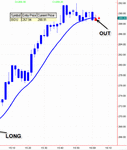Hotch
Experienced member
- Messages
- 1,409
- Likes
- 256
Hey guys,
Been lurking about these forums for a bit, will hopefully set up a blog come september (bit busy atm).
I figured I'd start off with this post, as i want to know your thoughts (why else would i post i guess).
There is this generally accepted rule of not putting more then 2% of your trading capital into one stock (or deal).
Do you agree? Why? What are the advantages?
Personally, I don't follow it, but i think it might be because I'm missing something major, and as I am rather rubbish at explaining my ideas in text, i figured it would be easier to reply to your views, then hope you'd understand mine.
yay?
P.S. great forum, love you all, etc
Hotch
xxx
Been lurking about these forums for a bit, will hopefully set up a blog come september (bit busy atm).
I figured I'd start off with this post, as i want to know your thoughts (why else would i post i guess).
There is this generally accepted rule of not putting more then 2% of your trading capital into one stock (or deal).
Do you agree? Why? What are the advantages?
Personally, I don't follow it, but i think it might be because I'm missing something major, and as I am rather rubbish at explaining my ideas in text, i figured it would be easier to reply to your views, then hope you'd understand mine.
yay?
P.S. great forum, love you all, etc
Hotch
xxx




